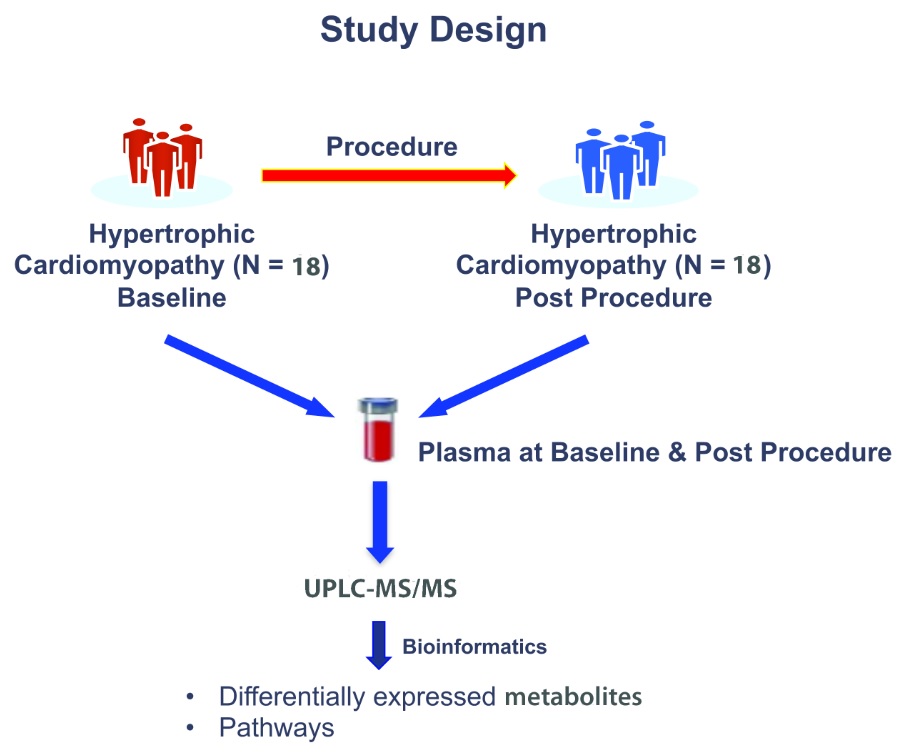Hypertrophic cardiomyopathy (HCM) is a common inherited heart disorder complicated by left ventricle outflow tract (LVOT) obstruction, which can be treated with surgical myectomy. To date, no reliable biomarkers for LVOT obstruction exist. To determine whether metabolomic biomarkers for obstruction can be identified, we conducted metabolomic profiling on plasma samples of 18 HCM patients before and after undergoing surgical myectomy to measure changes in the plasma metabolome in the postoperative state. Plasma was collected approximately 4 weeks before surgery at the preoperative visit and approximately 3 months after the surgery at the postoperative visit. We found that 215 metabolites were altered in the postoperative state (p-value < 0.05). Identified metabolites that were significantly reduced post-myectomy included metabolites of heme, such as bilirubin, and phenylacetylglutamine, a biomarker of urea cycle disorders, which suggests that liver and kidney function are improved in the postoperative state. Markers of arginine metabolism such as homoarginine and dimethylarginine are also decreased in the postoperative state, suggestive of reduction in nitric oxide production, inflammation and heart failure after surgery. 3-hydroxybutyrate (BHBA) was also decreased, suggesting possible increased fatty acid utilization and a return to normal heart function. 12 of these metabolites were notably significant after adjusting for multiple comparisons (q-value < 0.05), including bilirubin, PFOS, PFOA, 3,5-dichloro-2,6-dihydroxybenzoic acid, 2-hydroxylaurate, trigonelline and 6 unidentified compounds, which support improved kidney and liver function and increased lean soft tissue mass. These findings suggest improved organ metabolic function after surgical relief of LVOT obstruction in HCM and further underscore the beneficial systemic effects of surgical myectomy.

